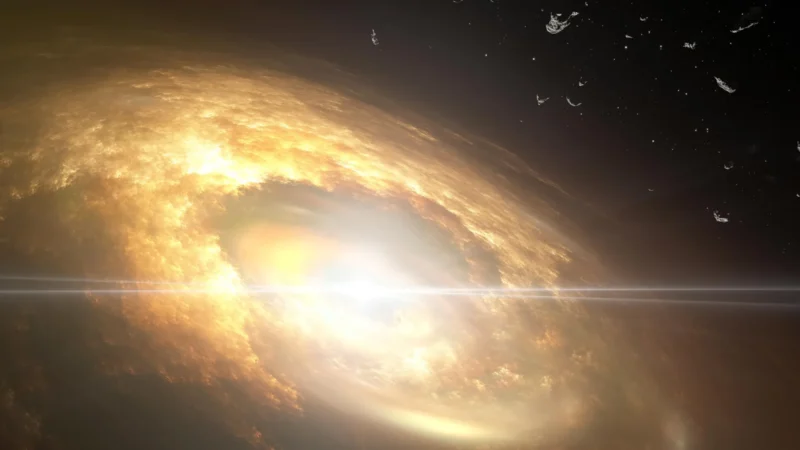Quick Takeaways
-
Discs Are Warped: New research from the exoALMA collaboration reveals that many protoplanetary discs, previously thought to be flat, exhibit subtle warps, challenging traditional views of planet formation.
-
Connection to Our Solar System: The observed warping, typically a few degrees, parallels the inclination differences among planets in our Solar System, suggesting a more chaotic initial state for planetary systems.
-
Impact on Planet Formation: These slight misalignments could influence critical processes like gas movement, turbulence, and material exchange, reshaping our understanding of how planets grow and settle into orbits.
-
A New Mystery: The research raises questions about the causes of these warps, possibly linked to gravitational influences from companion stars or the dynamics of gas and dust, prompting further investigation into their implications for cosmic formation.
A New Perspective on Planet Formation
Recent findings from an international research team challenge the traditional view of planet formation. Instead of smooth, flat discs of cosmic dust, scientists now see that protoplanetary discs often exhibit subtle warps. These twists, which may tilt just a few degrees, resemble the observed inclinations of planets in our Solar System. This revelation, reported in the Astrophysical Journal Letters, urges us to rethink the processes that govern how planets assemble.
Using the Atacama Large Millimeter/submillimeter Array (ALMA), researchers analyzed tiny shifts in radio waves emitted by carbon monoxide molecules. This method allowed them to discern the gas’s motion within the discs with unparalleled clarity. The findings suggest that these modest misalignments might not be anomalies but common outcomes in star and planet formation. By identifying these warps, scientists uncover new layers of complexity that influence how planets settle into their orbits.
The Implications of Warped Discs
Understanding warped protoplanetary discs has significant implications for our knowledge of planetary systems. These structures may affect the movement of gas and dust in the discs, impacting both turbulence and material exchange. Consequently, this influences not only the growth of planets but also their ultimate arrangement around their stars.
Moreover, the research raises intriguing questions about the reasons behind these warps. Could they stem from the gravitational influence of unseen companion stars, or the chaotic dynamics of gas and dust? The answers to these questions could reshape our understanding of the cosmos. As we continue to explore these warped nurseries, we unlock new dimensions in our quest to comprehend the diversity of worlds beyond our Solar System. Such insights could pave the way for future discoveries, enhancing humanity’s journey into the mysteries of the universe.
Stay Ahead with the Latest Tech Trends
Stay informed on the revolutionary breakthroughs in Quantum Computing research.
Discover archived knowledge and digital history on the Internet Archive.
TechV1

